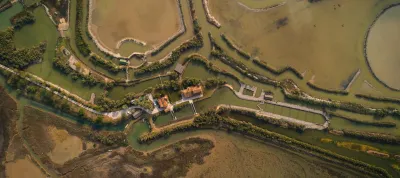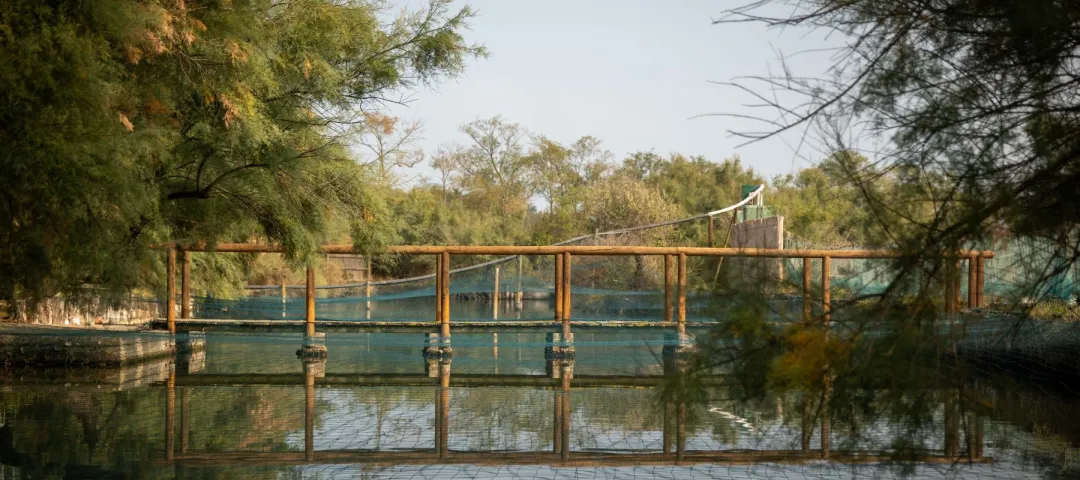General information
RDP Priority
- P4. Ecosystems management
RDP Focus Area
- 4A: Biodiversity restoration, preservation & enhancement
RDP Measure
- M04: Investments in physical assets
Beneficiary type
- Farmer / land manager
Summary
The Società Agricola Valle Pantani organic fish farm, on the north-eastern Italian coast, is part of the Natura 2000 network and is situated in a nitrate-sensitive area under Directive 91/676/EEC.
The farm site provided shelter to several migratory bird species but had been left in poor condition for a long time before the current owner took over. CAP support helped to improve the habitats and diversify them, encouraging other bird species to visit or live there.
Results
In the first year after the project's completion, there was an average fourfold increase in the number of birds compared to the last year before the work. Additionally, seven new species were observed.

Promoter
Azienda agricola Valle dei Pantani
Funding
RDP support: 162 313 (EUR)
EAFRD: 92 324 (EUR)
National/Regional: 69 989 (EUR)
Ressources
Liens
Context
The Società Agricola Valle Pantani organic fish farm is located in the Marano and Grado lagoon, where the Isonzo and Tagliamento rivers meet before entering the Adriatic Sea on the northeastern Italian coast. The area is part of the Natura 2000 network according to Habitat Directive 92/43/CEE. It is also classified as a nitrate-sensitive area under Directive 91/676/EEC.
The farm covers approximately 140 hectares, of which around 15 hectares are usable land, including eight hectares of vineyards. The current owner took over the farm in 2015 and found it had been left in poor condition for a long time. He focused on organic fish farming, producing European bass and gilt-head bream. The farm was certified organic in 2016 and is the first organic fish farm in the Friuli Venezia Giulia region.
The site already hosted several migratory bird species in its wetland areas, but the owner aimed to improve the habitats in order to encourage other bird species to visit or live there. Additionally, he planned to foster tourism activities as an ancillary business in the future.
Objectives
The aims of the project, which focused on approximately 3.5 hectares of land, were to:
- Restore and create natural and semi-natural habitats.
- Increase and improve the farm’s landscape diversity.
- Foster the presence of aquatic bird species.
- Improve the overall resilience of the farm and support the development of future tourism activities.
Activities
Project activities included:
- Setting up an arboreal-shrub border. This area includes a 220 m² grassy strip, serving as a windbreak and ecological corridor along the perimeter of certain agricultural lots.
- Creating an area of mixed scrub-clearing environments and restoring ecotones. This covers an extension of 11 500 m².
- Enlarging a large water collection tank. This tank, designed to provide protection and drinking water for birds, now covers a total surface area of 18 500 m².
- Creating three new small water tanks. These tanks cover 6 750 m², each having a maximum depth of 1.5 meters and a five-meter buffer strip along the edges.
Main results
- Thanks to these works, the data collected for the yearly bird census in the first year after the project's completion (2020) showed an average fourfold increase in the number of birds compared to the last year before the works (2017). Additionally, seven new species were observed.
- Following the habitat improvements, the farm also diversified into tourism activities, and in 2020, three apartments were made available for guests.
Key lessons
- The project activities were implemented with some variations, as it was discovered during the process that the underlying saltwater level was quite superficial.
- Water habitats like this are quite rare and can potentially host a wide array of bird species. Therefore, it is very important to manage them properly to enrich biodiversity. Improving the farm's biodiversity complemented several of the farm's business activities.
"Our habitats are a heaven for fish, and therefore also for birds. We thought that it was not appropriate to invest only in farm and fish rearing activity but decided to approach the management of our property in a holistic way."
